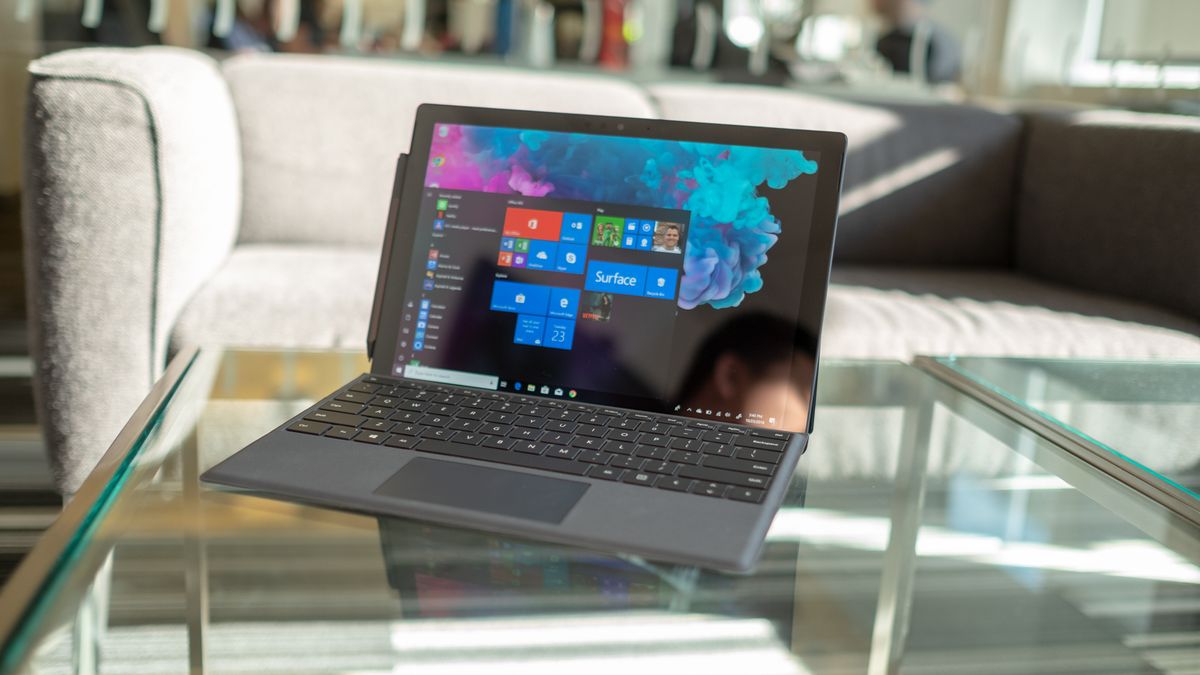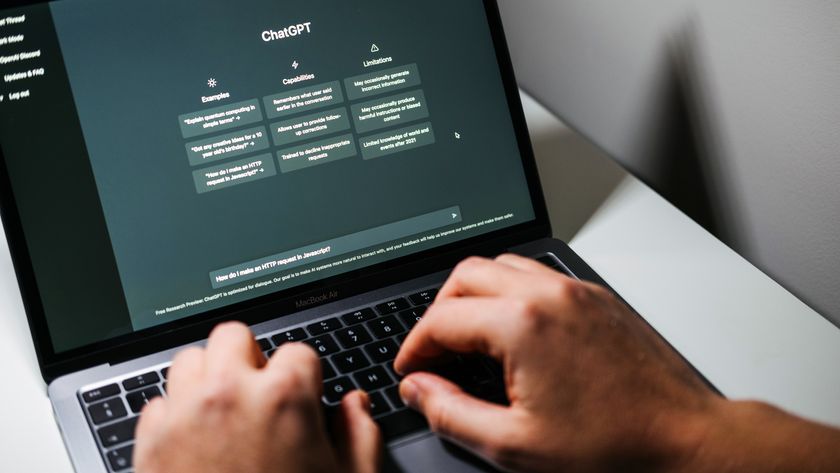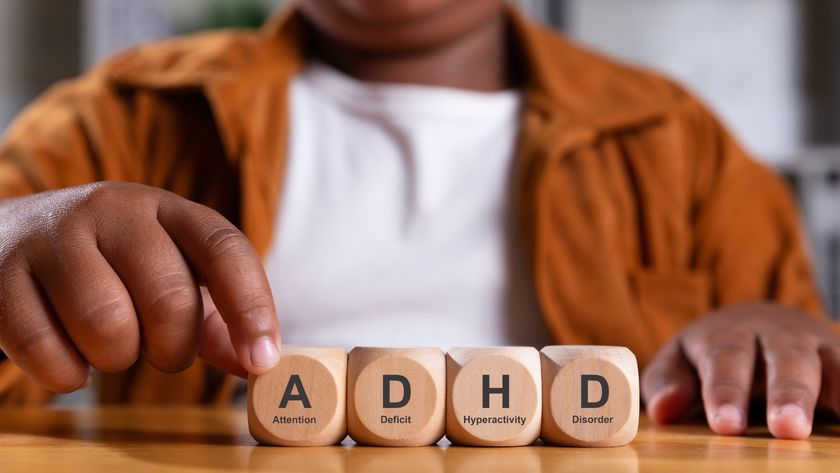TechRadar Verdict
Microsoft’s Surface Pro 6 is faster, has longer battery life and now comes in a sleek, new black shell, but that’s about it. It’s unquestionably better than last year’s model. However, it isn’t the generational leap many of us were waiting for. If you already have a Surface Pro 2017, this upgrade isn’t worth it. If you don’t, then this is the best Windows tablet to buy right now.
Pros
- +
Quad-core processing
- +
Long battery life
- +
Excellent new color option
Cons
- -
Still no USB-C
- -
Dated USB 3.0 port
- -
Few meaningful improvements
Why you can trust TechRadar
Did you know the Surface Pro 6 isn’t the newest Surface on the block? Read our review of the Microsoft Surface Pro X, Microsoft’s most recent Surface release.
Microsoft’s Surface sales keep getting stronger with a 21% leap
Microsoft’s next Surface Pen could be a smart stylus usable across all devices
The Microsoft Surface Pro 6 should have been the radical update to the line that Surface Pro users have been waiting for. After all, when its predecessor, the Surface Pro 2017, got a date instead of a number, the company claimed that it was because it lacked major upgrades to deserve a numbered moniker. Plus, the line has been in bad need of a refresh since the Surface Pro 4.
Sadly, while the Microsoft Surface Pro 6 does have its share of decent updates, fitted with a faster processor and a longer battery life, there are only those and not much else. Outside of a newer silicon and the new black color option, the tablet’s formula hasn’t radically changed.
So, not only did Microsoft completely and inexplicably skip the Pro 5. But, like the Pro 2017, the Surface Pro 6 is also missing some key changes that many Surface Pro users have been holding out for, like a USB-C port. That makes the Surface Pro 6 hard to recommend. So, where does that leave potential tablet users?
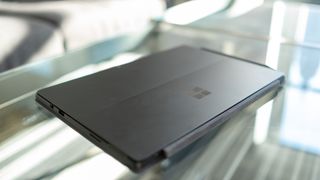
Here is the Surface Pro 6 configuration sent to TechRadar for review:
CPU: 1.6GHz Intel Core i5-8250U (quad-core, 6MB cache, up to 3.4GHz boost)
Graphics: Intel UHD Graphics 620
RAM: 8GB DDR3
Screen: 12.3-inch, 2,736 x 1,824 PixelSense display (Contrast ratio: 1,500:1, 100% sRGB color, 10-point multi-touch, 3:2 aspect ratio)
Storage: 256GB SSD
Ports: 1 x USB 3.0, mini DisplayPort, microSDXC card reader (UHS-I), headphone/mic jack
Connectivity: 802.11ac Wi-Fi (2 x 2 MIMO), Bluetooth 4.1 (Low Energy)
Cameras: 8MP rear-facing, auto-focus camera (1080p HD); 5MP front-facing, 1080p HD camera
Weight: 1.7 pounds (771g)
Size: 11.5 x 7.9 x 0.33 inches (292 x 201 x 8.5mm; W x D x H)
Price and availability
The Surface Pro 6’s base configuration will set you back $899 (£879, AU$1,145), right in line with the Surface Pro 2017’s pricing, if just a bit pricier. The tablet is presently available in the US, UK and Australian markets.
Bear in mind that, much like with earlier models, the Surface Pro 6 doesn’t include the $99 (£99, AU$139) Surface Pen nor the $159 (£149, AU$249) Type Cover in the box. That isn’t likely to change in the future, so anticipate spending more cash than the tablet price, especially if you’re looking to use it as a laptop alternative or to handle your graphic design projects.
The Surface Pro 6 we reviewed here, its configurations listed on the right, costs a lofty $1,199 (£1,149, AU$1,568), thanks to the upgraded storage – from 128GB on the base model to the 256GB listed here. That’s a sizeable price jump for only 128GB of extra storage space.
From there, the Surface Pro 6 can be configured to your desired specifications with up to an Intel Core i7 processor, 16GB of RAM and a 1TB SSD. If you really want to max out the Surface Pro 6 out, you’re looking at an exorbitant $2,299 (£2,149, AU$3,459) price tag.
As far as its main competitor, the 12.9-inch iPad Pro (2017) asks for a bit less at $799 (£769, AU$1,299). This will get you a 2,732 x 2,048 pixel display powered by Apple’s A10X SOC and with 64GB of flash storage. The iPad also doesn’t come with a stylus or a keyboard, which will cost you another $99 (£99, AU$145) and $169 (about £170, AU$245) respectively, if you purchase them from Apple.
On paper, the Surface Pro 6 remains to be the better value since you’re getting more of a full computer experience for only about 100 bucks (or quid) more. However, the race is definitely closer than it’s ever been.
If you want to go with Chrome OS or one of the best Chromebooks, the Google Pixel Slate is worth considering, which will set you back $799 (£749, AU$1,162) for the base model. This may have been a great deal if it wasn’t for Google is asking for an extra $199 (£189, AU$280) for the keyboard cover. That’s not exactly good value, especially considering that both the iPad Pro and Surface Pro 6 surpass it in terms of sheer power.
















Design and display
Other than the elegant new black color scheme that’s lovely to touch, just about nothing is different about the Surface Pro design compared to the 2017 model. The tablet measures only 0.33 inches thin and weighs just 1.7 pounds – again, this stays untouched from its predecessor.
The Surface Pro 6 has all the same ports and wireless options as last year’s model as well as – not to mention, the exact same Type Cover. We’re satisfied with the latter simply because the Type Cover is already excellent in its current iteration. In fact, we’ll go as far as to say that it might just be the best accessory of its kind that we’ve ever tested.
However, we’re extremely disappointed that Microsoft decided to forgo USB-C again, and that’s not only because of the apparent benefits that the platform has to offer. Microsoft has been gating faster data transfers and wider docking capabilities behind the proprietary Surface Connect port for a while now, forcing users who need that speed boost and expansion to pick up a $199 (about £150, AU$280) Surface Dock accessory, which increases the final cost some more.
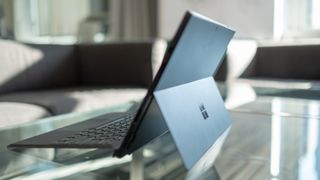
Even the included USB 3.0 is behind the curve of USB 3.1, which is the standard in 2019 and boasts twice the transferring data speed as the former. This isn’t OK: it’s now costing consumers more cash to unlock the full versatility of a device that Microsoft insists can function as their one and only computer.
On a slightly more positive note, the display, though mostly unchanged, is marginally improved in one area. It now has a stronger contrast ratio of 1,500:1 in comparison to the previous model’s 1,300:1.
This will benefit not just consumers, but content creators as well, with deeper blacks and more vibrant colors that absolutely make movies more superb looking, and can possibly make media editing much easier and more accurate for content creators.
First reviewed November 2018
Images Credit: TechRadar
- Get the best deal on you next Microsoft product with our Microsoft coupon codes.
- 1
- 2
Current page: Introduction, price, design and display
Next Page Performance, battery life, features and verdictJoe Osborne is the Senior Technology Editor at Insider Inc. His role is to leads the technology coverage team for the Business Insider Shopping team, facilitating expert reviews, comprehensive buying guides, snap deals news and more. Previously, Joe was TechRadar's US computing editor, leading reviews of everything from gaming PCs to internal components and accessories. In his spare time, Joe is a renowned Dungeons and Dragons dungeon master – and arguably the nicest man in tech.
